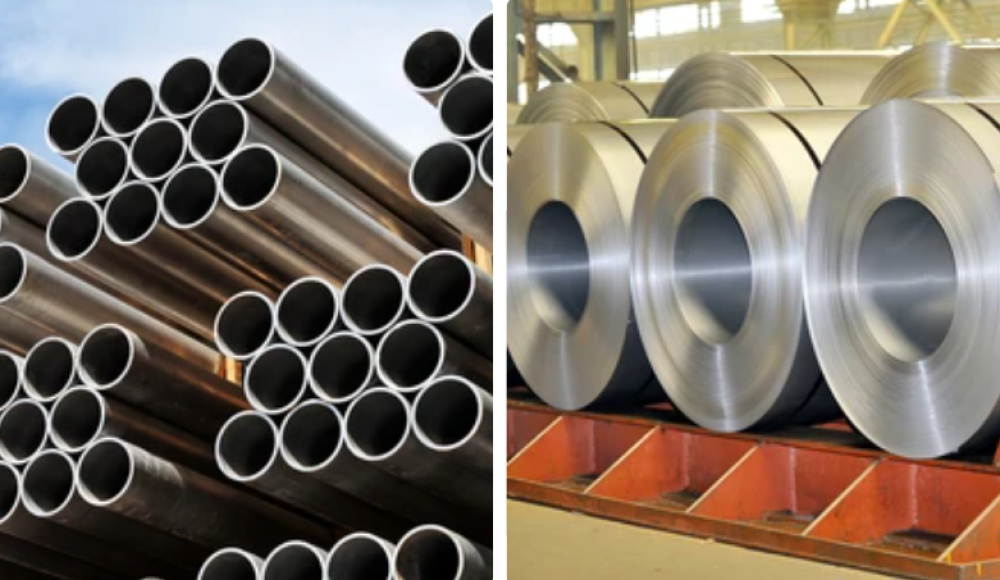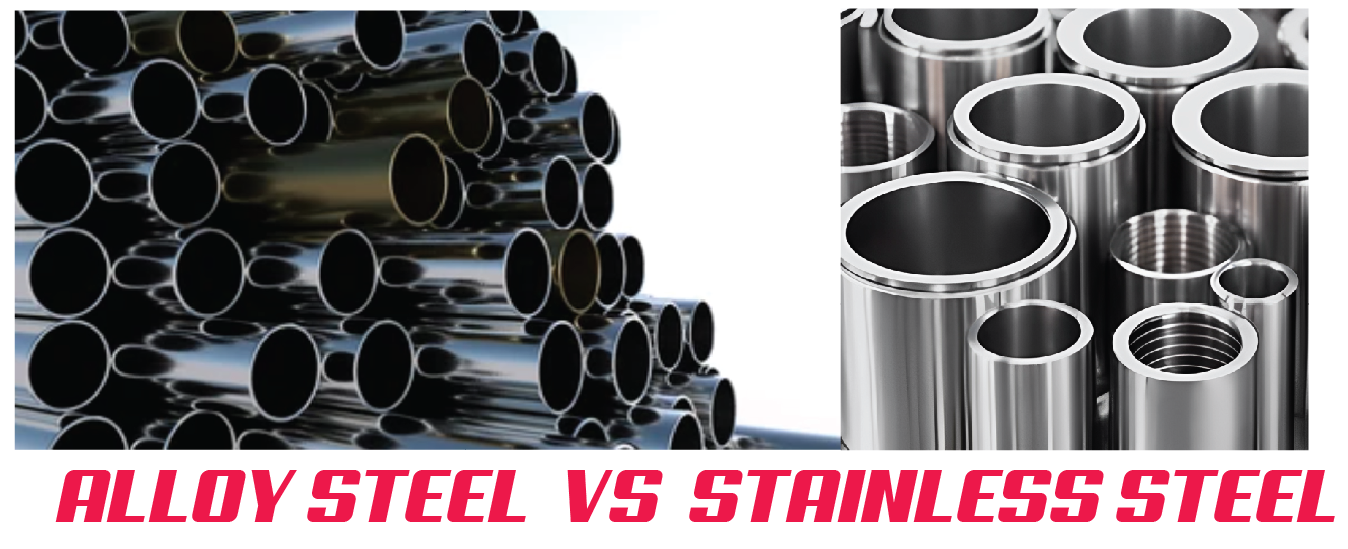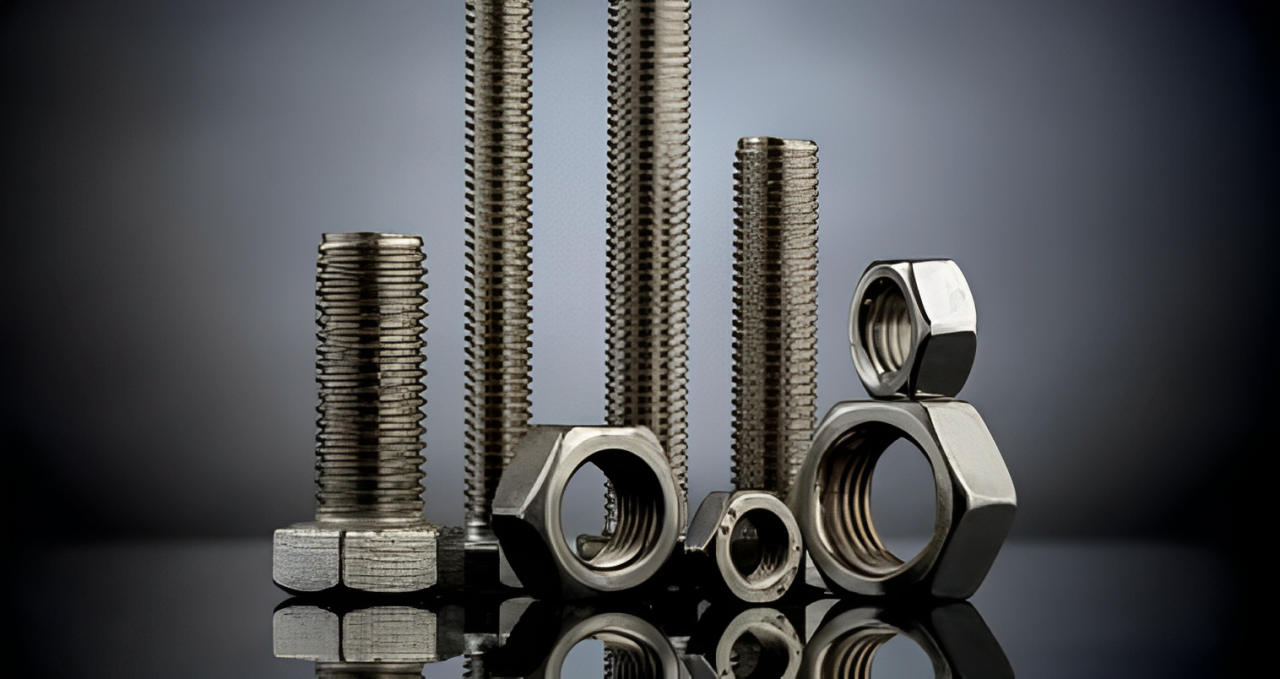Както е широко известно стомана играе роля в много индустриални отрасли, за строителство, различно производство, и автомобилната индустрия. Различните видове стоманени класове, налични днес, включват легирана стомана и неръждаема стомана наред с други продукти, тъй като тези продукти са каталогизирани за употреба поради техните гъвкави характеристики и високи нива на издръжливост. Но след това всеки тип стомана има уникални характеристики, които го квалифицират за определени приложения. В тази статия, ще откриете какви са материалите от легирана стомана и неръждаема стомана, различията на техните видове, и полезни съвети за вземане на решение кога да използвате всеки материал за производството на вашите части.
Какво е легирана стомана?
Легирана стомана се отнася до стомана с един или повече легиращи елементи, i.e. манган, хром, никел, молибден, ванадий, и силиций. Количествата на тези елементи обикновено са различни и обикновено са между един и петдесет процента. Като пряк резултат, подобрява якостните характеристики, работоспособност, твърдост, корозия, и износване. Легираната стомана се прилага в отрасли, които изискват здравина и висока възвръщаемост, включително; авиация, автомобили, и механични сектори.
Какво е неръждаема стомана?
Неръждаемата стомана е материал, използван в строителството, тъй като е сплав от стомана, съдържаща не по-малко от 10, или 5% хром. Така, осигурява изключителна защита от корозия чрез слоя от хромов оксид Cr2O3. Има и други съставки, включително никел, и молибден, които също увеличават способността му да не се заразява с ръжда, оцветяване, и корозия. Така, най-важните качества, които клиентите ценят, са външният му вид, санитарни свойства, и издръжливост, поради което неръждаемата стомана е търсена в много отрасли. Те могат да включват хранително-вкусовата промишленост, производство на медицински инструменти, строителство, и т.н.
Видове легирана стомана
Така, тук са различните форми на легирана стомана и техния състав, Имоти, и употреби в промишлеността.
| Тип легирана стомана | Обяснение | Ключови свойства | Типични приложения |
| Ниско легирана стомана | Съдържа < 5% легиращи елементи | Подобрени механични свойства | Структурни приложения, мостове, сгради |
| Високо легирана стомана | Съдържа > 5% легиращи елементи | Превъзходна твърдост и устойчивост на износване | Високопроизводителни приложения, индустриални инструменти |
| Хромолидна стомана | Хром-молибденова сплав | Висока якост, топлоустойчивост | Аерокосмически части, автомобилни компоненти |
| Никелова легирана стомана | Съдържа никел за здравина | Отлична издръжливост при ниски температури | Криогенни приложения, съдове под налягане |
| Манганова стомана | Известен с висока якост на удар | Устойчивост на абразия | Износващи се части (напр., скални трошачки, железопътни релси) |
Видове неръждаема стомана
Така, нека обсъдим различните видове неръждаема стомана в следващата таблица.
| Тип неръждаема стомана | Обяснение | Ключови свойства | Типични приложения |
| Аустенитна неръждаема стомана | Най-често срещаният тип; е немагнитен | Отлична устойчивост на корозия, оформяемост | Кухненско оборудване, медицински изделия |
| Феритна неръждаема стомана | Съдържа хром и малко никел | Умерена устойчивост на корозия, добра формоспособност | Автомобилни части, уреди |
| Мартензитна неръждаема стомана | Съдържа по-висок въглерод; известен с твърдостта си | Висока якост и твърдост | Хирургически инструменти, режещи инструменти |
| Дуплекс от неръждаема стомана | Съчетава аустенитни и феритни свойства | Висока якост, отлична устойчивост на корозия | Петролна и газова индустрия, химическа обработка |
| Втвърдяваща се неръждаема стомана | Подсилен чрез топлинна обработка | Изключителна здравина | Аерокосмически компоненти, инструменти с висока производителност |
Сравнение между легирана стомана срещу. Неръждаема стомана
От време на време срещаме термините легирана стомана и неръждаема стомана. Нека обсъдим основните разлики между тях.
1. Устойчивост на корозия
Неръждаемата стомана е много устойчива на корозия поради съдържанието на хром. Склонен е да образува оксиден слой, което го прави подходящ за влага или друга корозионна среда. въпреки това, за да може легираната стомана да предложи същото ниво на устойчивост, тя трябва да бъде подложена на обработка, която по своята същност не е много устойчива.
2. Сила
В зависимост от вида на използваните легиращи елементи, ние можем да подобрим якостта на опън в легираната стомана за подобрена висока производителност. освен това, неръждаемата стомана има по-висока якост от въглеродната стомана и не е по-здрава от легираната стомана.
3. цена
Неръждаемата стомана е малко по-скъпа от легираната стомана поради използването на хром и никел и нивото на трудност при нейната обработка. например, Изделията от легирана стомана могат да бъдат по-евтини по-често, отколкото не, тъй като могат да използват по-евтини легиращи агенти.
4. Естетичен
Каучукът има отлична устойчивост на износване, химически устойчив и се използва най-вече в чорапи. Неръждаемата стомана има блясък, полиран вид и се използва там, където външният вид може да е важен, i.e. полюс. въпреки това, легираната стомана не е визуално привлекателна, но е по-функционална.
5. Магнитни свойства
Повечето неръждаеми стомани не изпитват магнитно привличане и са подходящи за приложения, където магнетизмът е значителен. Като повечето стомани, много листове от сплави имат това, което е известно като „магнитна реакция“, което понякога е желателно при промишлена употреба.
6. Издръжливост
Легираната стомана е разработена да се справя с голямо напрежение, което я прави винаги здрава и издръжлива при натиск. Повечето неръждаеми стомани предлагат добра устойчивост срещу корозия, но техните механични свойства може да не притежават високоякостни легирани стомани при високи натоварвания.
7. Топлоустойчивост
В следващите случаи, когато термичният стрес е проблем, неръждаемата стомана обикновено се представя по-добре, тъй като не губи форма при високи температури. Но в зависимост от формулировката му, използваме легирана стомана, специално разработен за устойчивост при висока температура.
8. Работоспособност
Легираната стомана е по-лесна за работа, особено при проектиране на сложни конструкции, които може да изискват сложна работа. Неръждаема стомана, още по-силен, също е по-тежък и по-труден за работа поради своята твърдост. На всичкото отгоре, има проблеми с електромагнитното втвърдяване.
| Характеристика | Стомана | Неръждаема стомана |
| Устойчивост на корозия | Изисква специални лечения; по-малко устойчиви | Висока устойчивост поради съдържанието на хром |
| Сила | Висока якост на опън (до 250,000 psi) | Умерена сила (до 200,000 psi) |
| цена | Като цяло по-достъпни ($0.50 – 2,00 $/lb) | По-скъпи ($1.50 – $4.00/lb) |
| Естетичен | По-функционален; като цяло матово покритие | Ценен за блясък, полиран външен вид |
| Магнитни свойства | Запазва магнитните свойства | Повечето класове са немагнитни |
| Издръжливост | Отличен при силен стрес | Устойчив на корозия |
| Топлоустойчивост | Варира в зависимост от състава; до 1200°F | Поддържа целостта до 1500°F |
| Работоспособност | По-лесен за машинна обработка и производство | По-трудно за заваряване и оформяне |
Съвети, които да имате предвид, когато избирате идеалната стомана за вашия проект за обработка
По-долу са важни фактори, които имате предвид, докато избирате идеалната стомана за вашия проект.
- Устойчивост на корозия: Изберете неръждаема стомана за зони, изложени на вода или химикали.
- Сила и издръжливост: Изберете легираната стомана, ако е необходимо да имате висока якост на опън и определено ниво на якост.
- цена: Разходите за легирана стомана са по-ниски от тези за неръждаема стомана.
- Естетически изисквания: Неръждаемата стомана трябва да се използва в проекти, където крайният продукт изисква някакъв полиран и естетически приятен елемент.
- Обработваемост: Някои видове и от двата материала може да са по-трудни за работа, така че изборът зависи от това какво е желателно за даден проект.
Приложения на легирана стомана
Така, ето някои от често срещаните приложения на легираната стомана:
- Автомобилни компоненти: Популярен за зъбни колела и оси, тъй като е здрав и здрав материал.
- Аерокосмически части: Подходящ за колесници на самолети и лопатки на турбини поради техните високотемпературни свойства.
- Строителство: Използва се в структурни части с висока якост като мостове и сгради.
- Инструментална екипировка: Популярни в свредлата, триони, и машинни инструменти в резултат на твърдостта на този вид стомана.
- Масло & Газова промишленост: Прилага се в тръбопроводи и съдове под налягане поради високата си якост на опън и работа при повишени температури.
Приложение на неръждаема стомана
Така, ето някои от често срещаните приложения на неръждаемата стомана:
- Медицинско оборудване: Използва се, когато се прилагат хирургически инструменти и импланти, поради способността му да избягва корозия и има хигиенни свойства.
- Преработка на храни: Широко разпространен в хладилниците, печки, кухненски прибори, и опаковки за храни поради хигиенните им характеристики.
- Строителство: Прилага се при изграждането на външни фасади, покриви, и балкони поради твърдост и декоративен вид.
- Автомобилна: Използва се в изпускателни системи и гарнитури, тъй като не корозира.
- Химическа обработка: Прилага се на танкове, клапани, и тръби за справяне с корозионни химикали.
Плюсове и минуси на легираната стомана
По-долу са плюсовете и минусите на легираната стомана:
Предимства:
- Този материал има високо съотношение на якост към тегло, което означава, че е безопасен и високоенергийно ефективен.
- Превъзходна здравина.
- Голяма гъвкавост в неговите механични свойства.
- Добра устойчивост на износване.
- Полезност в различни приложения в приложения, носещи напрежение.
Ограничения:
- Трябва да има покритие или покритие за защита от ръжда и корозия.
- Може да бъде по-страшно да анализирате с помощта на машина.
- Това е доста скъп материал от въглеродната стомана.
- Склонен към ръждясване, ако не се поддържа добре.
- Не е толкова приятен за окото, колкото неръждаемата стомана.
Плюсове и минуси на неръждаемата стомана
Предимства:
- Предлага значителна устойчивост на корозия.
- Лесен за почистване и поддръжка.
- Блестящо покритие на повърхностите с атрактивен дизайн.
- Устойчивост на висока температура.
- Издръжлив и дълготраен.
Ограничения:
- Скъп от материалите от легирана стомана за конструкцията на артикула.
- Някои степени са трудни за заваряване и обработка.
- Уязвими към корозионно напукване под напрежение.
- Не е по-здрав от легирана стомана в някои приложения.
- По-тежки от някои видове стомана.
Кога да изберете легирана стомана?
- Когато вашият проект изисква повече сила и издръжливост.
- За тези приложения, които са подложени на условия на висока температура или тежко натоварване.
- Когато цената е проблем, който не може да бъде пренебрегнат и трябва да бъде сведен до минимум.
- Когато корозията не е основен фактор, или когато са възможни такива специални лечения.
- Части, които ще изпитат умора и триене.
Кога да изберете неръждаема стомана?
- За приложения, където изискването е висока устойчивост на корозивна среда.
- Когато видът и чистотата на материала имат значение.
- Керамиката зависи до голяма степен от нейната употреба в зони, където влиза в контакт с химикали или влага.
- При проекти, при които дълготрайността на сградата е важна.
- Това е гладък и немагнитен материал, широко използвани в производството на продуктови конструкции.
Заключение
В заключение, легираната стомана срещу. неръждаема стомана предлага няколко функции и може да се препоръчва за различни цели. Легирана стомана се използва там, където напрежението е вероятно да бъде високо. освен това, това е важно за здравината и издръжливостта на материала. въпреки това, Неръждаемата стомана трябва да се използва в електролитни приложения, където елегантният външен вид и хигиената са важни, както и устойчивостта на корозия. Оценяването на тези два материала и техните разлики ви дава точната информация. Така, можете да изберете най-добрия материал за вашия проект, когато избирате стомана.
често задавани въпроси
1. Каква е разликата между легирана стомана и неръждаема стомана?
Легираната стомана е известна със своята висока якост и издръжливост, докато неръждаемата стомана е добре известна със своята устойчивост на корозивна атака.
2. Каква стомана е по-подходяща за използване при високи температури?
Легираната стомана е предпочитана, когато е включена топлина, тъй като има по-добри топлоустойчиви свойства от неръждаемата стомана.
3. Магнитна е от неръждаема стомана?
Мартензитната неръждаема стомана например е магнитна, докато аустенитната неръждаема стомана не е.
4. Може да легира стоманена ръжда?
да, факт е, че ако легираната стомана не е защитена с подходящи устойчиви на корозия покрития, тогава може да ръждясва.
5. Неръждаемата стомана е по-трудна за обработка от легираната стомана?
Обработката на неръждаема стомана може да е по-трудна поради допълнителната присъща здравина, въпреки че това зависи от марките стомана.
6. Коя стомана е по-скъпа легирана стомана или неръждаема стомана?
Неръждаемата стомана е по-скъпа от обикновената въглеродна стомана поради състава си с повече хром и никел.
7. За кои индустрии са подходящи продуктите от легирана стомана?
Легираната стомана може да се използва в космическото пространство, автомобилен, строителство, и петролни индустрии.











1 мисъл за "Легирана стомана срещу неръждаема стомана: Изчерпателно ръководство”